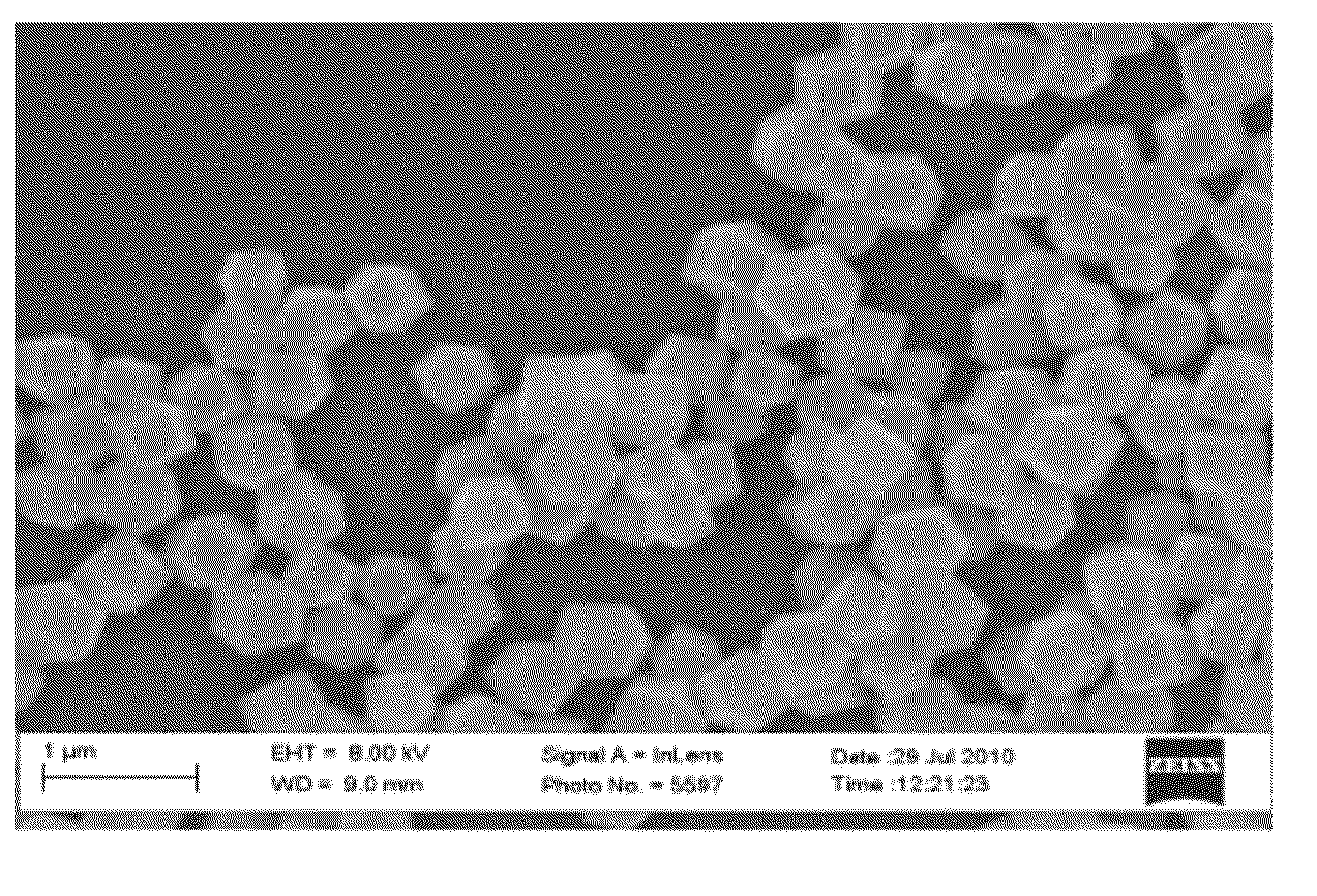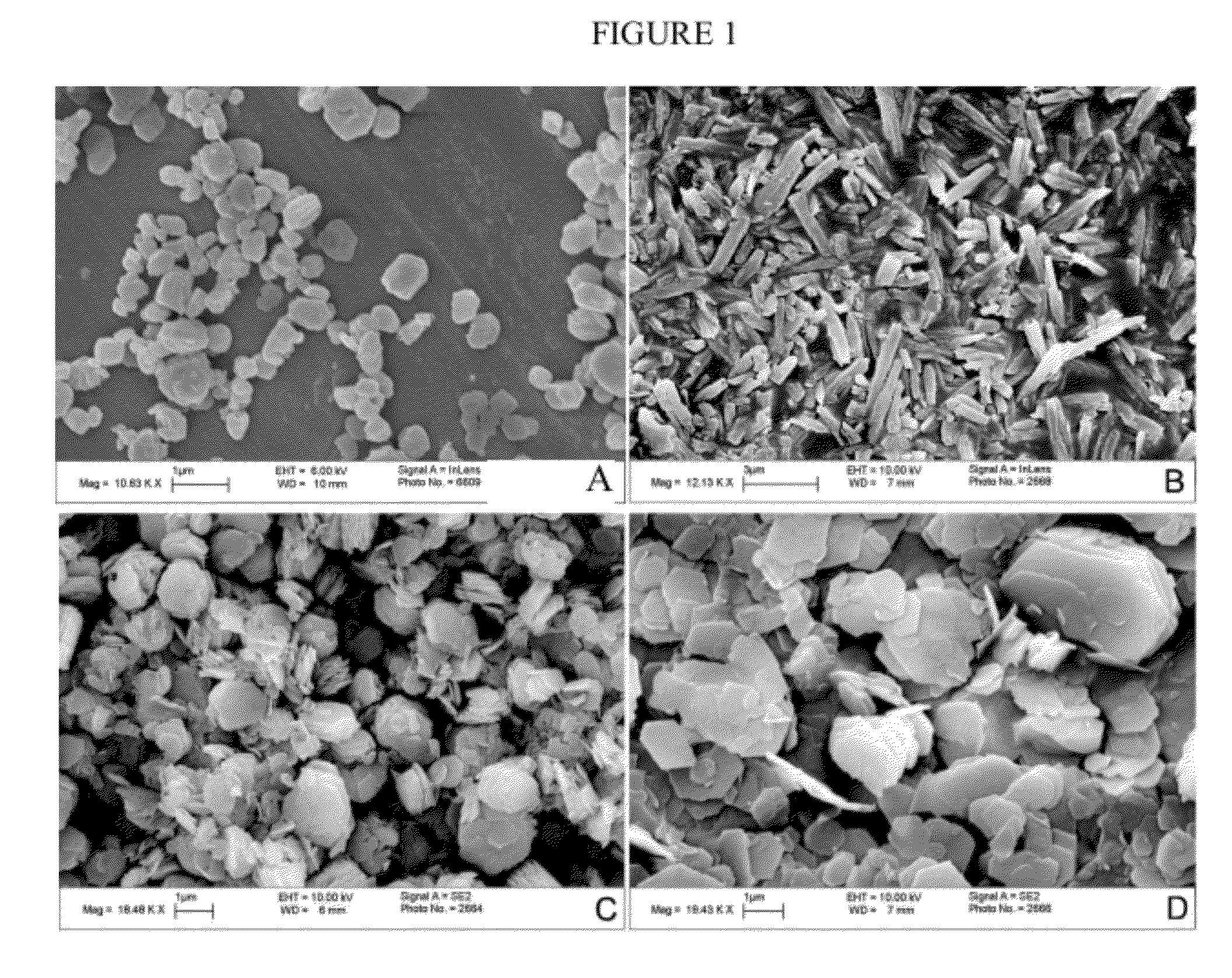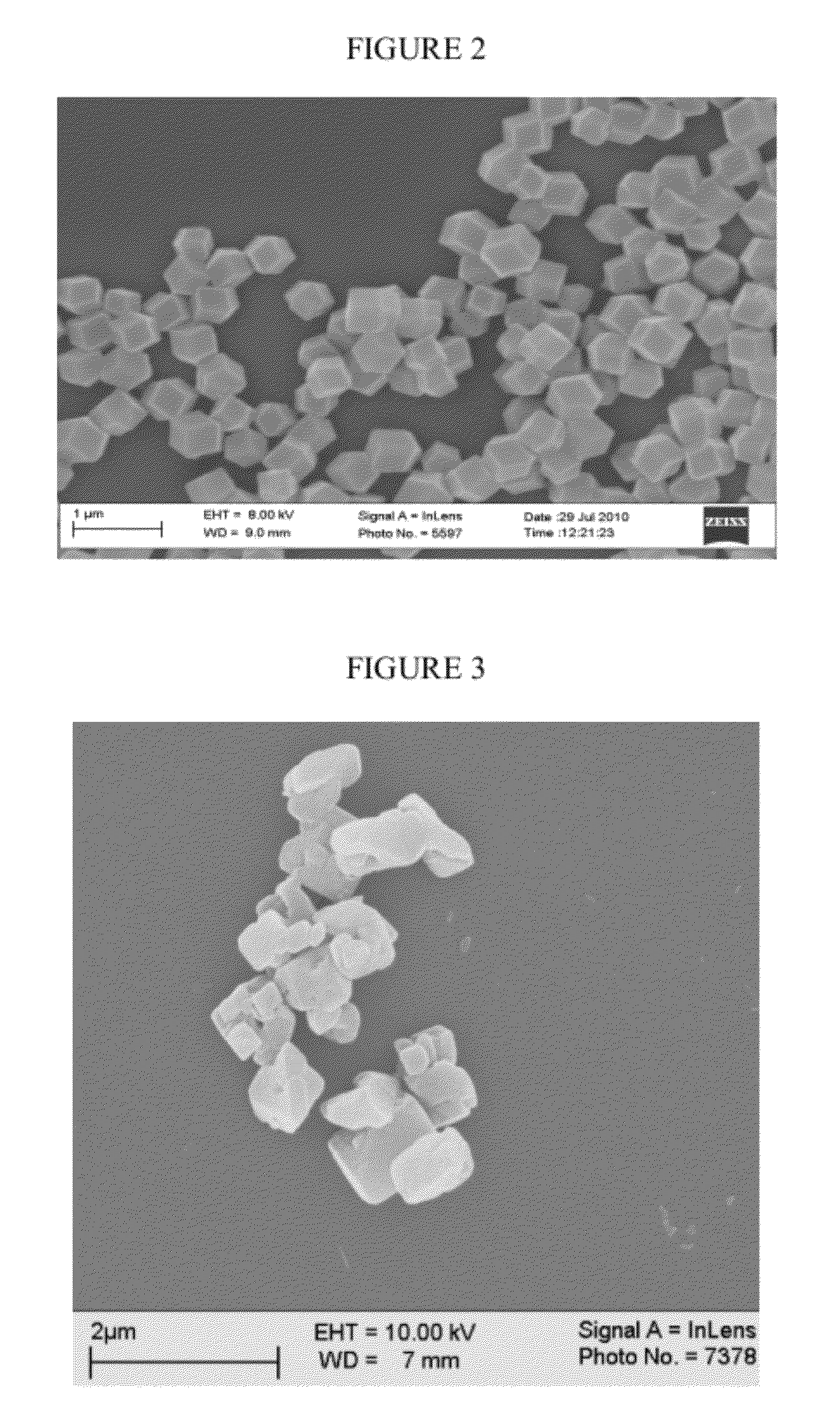Mof nanocrystals
a nanocrystal and nano-crystal technology, applied in the field of metal organic framework (mof) materials, can solve the problems of difficult and confusing task of describing and organizing the complex structure of mofs, flexibility effects within the framework, and room in the art for improvement, so as to reduce crystal size and reduce crystal size
- Summary
- Abstract
- Description
- Claims
- Application Information
AI Technical Summary
Benefits of technology
Problems solved by technology
Method used
Image
Examples
example 1
Cu-hfipbb
[0039]Cu-hfipbb is a MOF composed of one dimensional cages (5.1 Å) joined by small windows (3.1 Å) with an exceptionally high predicted CO2 / CH4 selectivity (˜1000). The synthesis of Cu-hfipbb has several unusual features in comparison to most other MOFs. First, the control of hydrothermal synthesis is impeded by the marked hydrophobicity of one of the main reactants, H2hfipbb. Only above 90° C. does one observe a solubility of H2hfipbb high enough to form a clear aqueous solution. Second, the MOF formation requires a protonated H2hfipbb ligand. Most MOF syntheses rely on a base to deprotonate a carboxylic acid, which then becomes incorporated into the MOF and creates a basic environment inside the MOF. As a result of these unique features, attempts to solvothermally synthesize Cu-hfipbb in an aprotic solvent (such as N,N-dimethylformamide) have unsuccessful. These two factors precluded the use of conventional methods to synthesize sub-micron Cu-hfipbb.
[0040]Because the publ...
example 2
ZIF-90
[0055]ZIF-90 is a material composed of Zinc atoms linked through imidazolate carboxyaldehyde linkers to form a sodalite cage structure with 3.5 Å windows that has been shown to preferentially adsorb CO2 over CH4.
[0056]A closely related MOF, ZIF-8 was previously synthesized by mixing excess ligand with Zn at room temperature in methanol, but an analogous procedure for ZIF-90 did not yield small crystals due to the decreased solubility of the imidazole carboxyaldehyde linker in methanol. Furthermore, this ligand is soluble in DMF only after heating for at least 30 minutes.
[0057]One lab recently reported a ZIF-90 synthesis by heating the metal / ligand precursors in DMF and then adding a “non-solvent” to the cooled DMF solution, thus precipitating submicron ZIF-90 crystals. However, this method led to a size distribution with both small crystals of about 100 nm and larger crystals around 1 micron in size. One possible explanation for this size distribution is that prior to the addi...
example 3
MOF-508b
[0060]MOF-508b is another small-pore MOF consisting of zinc atoms linked via terephthalate and pillared with bipyridyl ligands to form 4 Å 1D channels.10,11 While nanocrystals of this material could be synthesized by adding a base, such as triethylamine, it was difficult to isolate the proper phase as the subsequent triethylammonium ions can be incorporated in anionic frameworks as charge balancing ions.
[0061]Another group used a similar method with cobalt hydroxide as the metal base source to fabricate cobalt succinates to create phase diagrams, but no nanocrystals were reported. Instead of adding another chemical species to the reaction mixture (such as triethylamine), we have developed an approach that incorporated a metal salt with a basic anion; thereby, eliminating salt byproducts and suppressing formation of additional phases.
[0062]Specifically, nanocrystals of MOF-508b (Scheme 2 as depicted in FIG. 6B) could be formed at room temperature in methanol when using betwee...
PUM
| Property | Measurement | Unit |
|---|---|---|
| size | aaaaa | aaaaa |
| temperature | aaaaa | aaaaa |
| particle size distribution | aaaaa | aaaaa |
Abstract
Description
Claims
Application Information
 Login to View More
Login to View More - R&D
- Intellectual Property
- Life Sciences
- Materials
- Tech Scout
- Unparalleled Data Quality
- Higher Quality Content
- 60% Fewer Hallucinations
Browse by: Latest US Patents, China's latest patents, Technical Efficacy Thesaurus, Application Domain, Technology Topic, Popular Technical Reports.
© 2025 PatSnap. All rights reserved.Legal|Privacy policy|Modern Slavery Act Transparency Statement|Sitemap|About US| Contact US: help@patsnap.com



